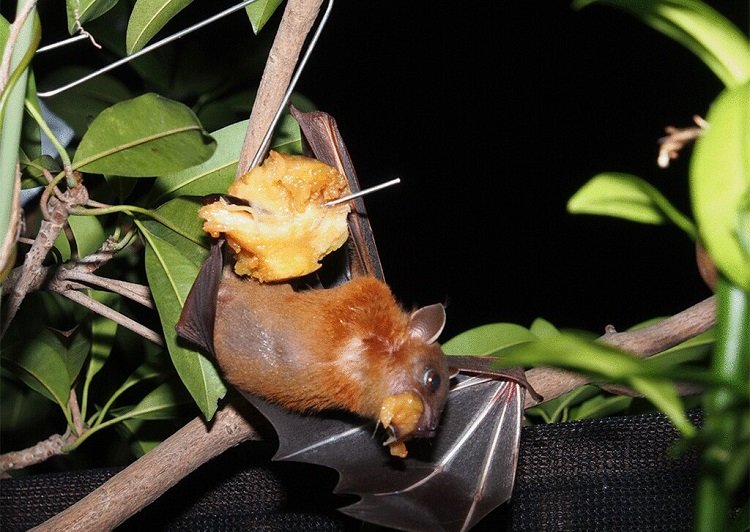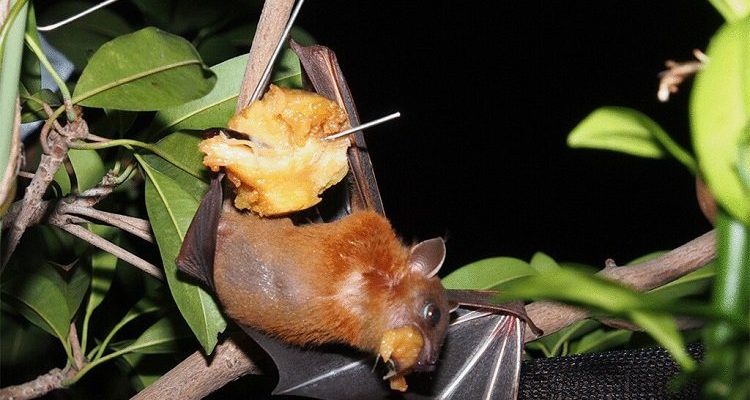
Fruit bats are like the gardeners of our forests. They play a vital role in pollination and seed dispersal, which means they help new plants grow. Just like a gardener carefully picking ripe vegetables, fruit bats are selective about what they eat, choosing the juiciest fruits and pollinating flowers as they go. In this article, we’ll explore their diet, hunting strategies, and the impact they have on nature. So, grab a snack and let’s get started!
Understanding the Fruit Bat’s Diet
Fruit bats primarily feast on, you guessed it—fruits! Their diet mainly consists of a wide range of fruits, including bananas, figs, mangoes, and guavas. They have a powerful sense of smell that helps them locate ripe fruits from a distance. Unlike some animals that might munch on everything in sight, fruit bats are *picky eaters*, often opting for ripe and juicy options. This selectiveness is not just a personal preference; it plays a critical role in their survival.
What’s fascinating is that fruit bats have strong, long tongues that can extend to reach the nectar deep inside flowers. This ability allows them to access food that many other animals can’t. As they feed, they inadvertently transfer pollen from flower to flower. This helps plants reproduce and creates a vibrant ecosystem filled with life. Honestly, without fruit bats, many of the trees and plants we love might not thrive.
Nutritional Needs of Fruit Bats
You might wonder, how do these bats get the nutrients they need? Well, just like us, fruit bats need a balanced diet. Fruits provide them with sugars for energy and essential vitamins. They also consume leaves and flowers, which offer added nutrients and help round out their meals. In some cases, fruit bats might even munch on the bark or wood of certain trees.
Each bat species has its own preferences, but they all share a common goal: to maintain a healthy diet that keeps them powered up for flying and foraging. Their knack for finding nutritious food makes them resilient in a variety of habitats, from tropical rainforests to urban areas.
The Hunting Strategies of Fruit Bats
You might picture fruit bats swooping down from the treetops like superheroes on the hunt. Their hunting methods are quite interesting. Unlike insectivorous bats that rely on echolocation to catch their prey, fruit bats mostly rely on their keen eyesight and sense of smell. They can spot ripe fruits from a distance even when it’s dark outside.
When it comes to hunting, fruit bats tend to work alone or in small groups. They’ll fly over large areas, scouting for the perfect feeding spot. Once they locate a target, they swoop in gracefully and use their sharp teeth to tear into the fruit. It’s almost like watching a skilled chef preparing a dish. They know exactly how to get to the good stuff!
Group Foraging and Social Behavior
Interestingly, fruit bats are social creatures. Although they often hunt alone, they occasionally team up to find food. This group foraging benefits everyone involved. By working together, they can cover greater distances, find more food, and even protect themselves from predators. Imagine a group of friends exploring a new city—each person brings their unique perspective and knowledge, making the adventure much richer.
Additionally, fruit bats communicate with each other using various vocalizations. These sounds can signal the presence of ripe fruit or alert others of potential danger. This social aspect of their foraging not only helps them survive but also supports their overall health and well-being.
The Role of Fruit Bats in the Ecosystem
Let’s take a moment to appreciate how crucial fruit bats are to our environment. As they travel from tree to tree, eating and spreading seeds, they help maintain healthy forests. This, in turn, supports countless other species, including birds, insects, and even larger mammals. The seeds they disperse can lead to new plants, which can become homes for a variety of wildlife.
By pollinating flowers, fruit bats also contribute to biodiversity. Many plants depend on them for reproduction. Without bats, some plants might struggle to reproduce, which can lead to a ripple effect in the ecosystem. Think of it as a chain reaction—a single change can affect many other parts of the environment.
Threats to Fruit Bats and Conservation Efforts
Unfortunately, fruit bats face numerous threats today. Habitat loss due to deforestation, hunting, and climate change are significant concerns. As their natural homes disappear, their food sources shrink, making it harder for them to thrive. Additionally, in some areas, fruit bats are hunted for their meat or captured for the pet trade.
Conservation efforts are vital to protect these incredible bats. Organizations are working to establish protected areas, promote awareness, and create legislation to safeguard their habitats. If you ever hear someone talking about fruit bats, remember that supporting conservation can make a real difference in their survival.
In conclusion, fruit bats are much more than just fascinating creatures of the night. Their unique diet, clever hunting strategies, and essential role in the ecosystem highlight their importance. By enjoying their favorite fruits, they help keep our environment flourishing.
So, the next time you bite into a banana or savor a mango, take a moment to think about the fruit bats that help make those tasty treats possible. They’re doing their part in the cycle of life, and we should do ours by protecting their habitats and appreciating their contributions. Let’s celebrate the amazing world of fruit bats together!

